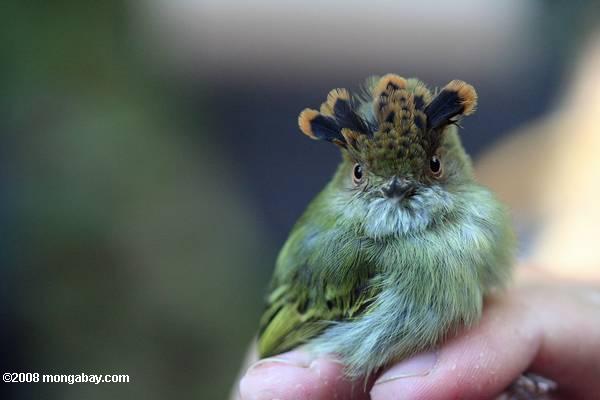This is a compilation of responses to some of the most frequently asked questions as of January 8, 2015.
ORIGIN OF MONGABAY
Why did you start mongabay?
Mongabay was born out of my passion for wildlife and wild places.
I was a lucky child: my mother was a travel agent and my father had a lot of airline miles. They prioritized travel, wanting to give my sister and I a taste of other places and cultures.
I always loved herps — reptiles and amphibians — so I was especially drawn to tropical rainforests, which have an incredible array of frogs, snakes, and lizards. Therefore I would get particularly excited when we visited these places.
As I grew older I became more aware of what was happening to rainforests and other wild places. And then when I was 12, this destruction touched me personally after a visit to eastern Ecuador, where an area of forest was polluted by an oil spill. Upon hearing the news, I wondered how that spill would affect the kids I had befriended in the forest and the animals I’d seen.
Unfortunately that wasn’t the last time I lost a special place in the forest. When I was in high school, I visited Malaysian Borneo with my family. While we were there, I met a scientist named Clive Marsh who showed me the wonders of Borneo’s increasingly endangered lowland rainforest. Some of my most precious memories are from that visit: hiking under the tall trees, swimming in the crystal clear creeks, and seeing magnificent wildlife, including orangutans.

Rainforest near the track that was destroyed.
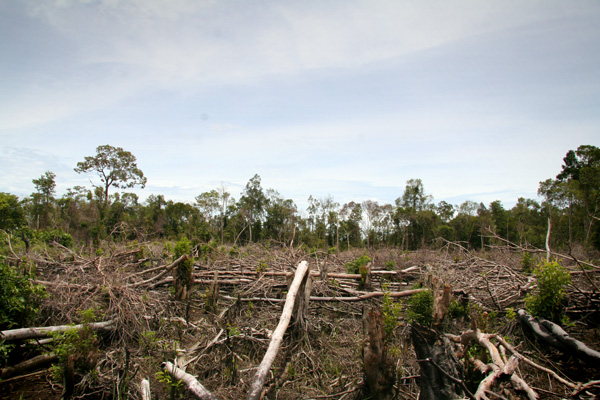
Deforestation in Borneo
After returning home to California, I kept in touch with Clive. One day his letter had devastating news: the tract of forest we had visited was no more. It had been torn down for wood pulp. I don’t know what happened to the animals.
The destruction of that forest was heart-breaking but it inspired me to try to make a difference. I wanted to make people aware of beauty of these places, why they are important, and why they are being destroyed.
In college I started writing a book about rainforests. I spent long hours in the library, talking with experts, and scouring the Internet for information.
I finished university a year early and used that time to complete the book. I found a publisher and the book went through peer-reviews. Everything seemed to be falling into place.
But then one day I got a call from the publisher with some bad news: it didn’t have money to put pictures in the book. Publishing a book without photos wasn’t an appealing option — after all how could I convey the beauty of these places without photos?
I thought about my options. I could try raising money to license photos, but I knew nothing of fundraising and had little time to learn given that I was about to start a “real job”. I quickly came to the realization that I wrote the rainforest book for impact, not money, so I decided to post it online for free so everyone could read it.
I called the web site mongabay.com after another special place: Nosy Mangabe, a spectacular island off Madagascar.

Nosy Mangabe shoreline
While I had a full-time job in Silicon Valley, I was able to use nights and weekends to devote about 50 hours a week to improving and expanding the site. Much to my surprise the site got popular.
After four years, I put advertising on the site. Because the site received significant levels of traffic, within six months advertising was generating revenue equivalent to nearly half my pay check, raising the possibility that I could pursue my passion as my career. And that’s what I did: at 26 I quit my job and never looked back.
Since then Mongabay has grown to become one of the most popular sites on the web, drawing more than twenty million visitors a year.
Why the name Mongabay?
“Mongabay” is derived from the name of a small island in Madagascar’s Bay of Antongil: Nosy Mangabe.
“Nosy” is the Malagasy word for “island”, while “mangabe” means blue or beautiful. The name is apt: Nosy Mangabe is a paradise for nature and wildlife lovers like me. The island is home to stunning chameleons, bizarre leaf geckos, jewel-like frogs, and several species of lemurs, including the unusual aye-aye. It is surrounded by coral reefs and a rich breeding ground for humpback whales.
Besides honoring a special place, the choice of “Mongabay” had another advantage: the term was completely unique. If you typed “mongabay” into the leading search engines of the time — AltaVista or Excite — you got zero results. It would be easy for me to see whether people talked about the site.
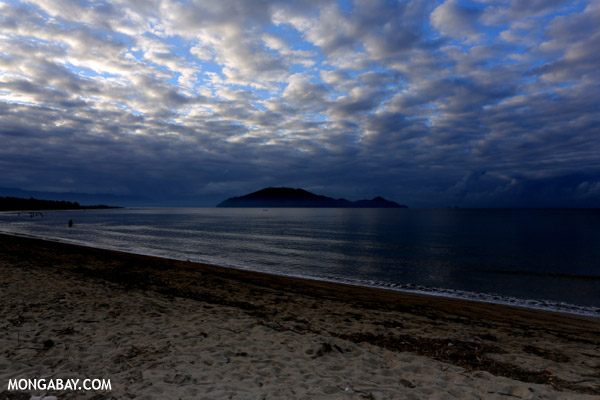
Nosy Mangabe as seen from a beach in Maroantsetra, Madagascar
How old are you? Where do you live?
I was born in the San Francisco Bay Area in 1978 and live not far from where I grew up.
What does a typical work day look like?
One of the things I love about my work is my days are variable. However my days can generally be categorized as either “in the office” or “in the field”.
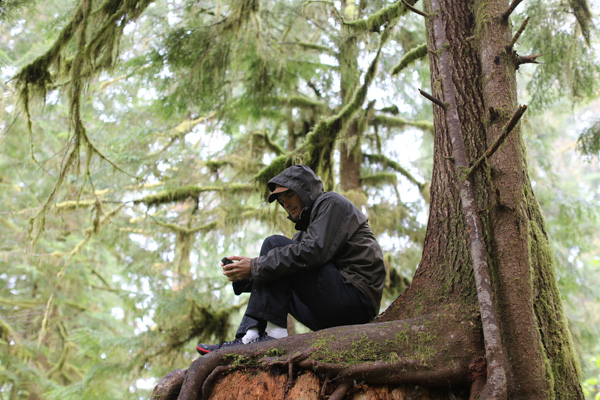
Staying connected in the temperate rainforest of Washington’s Olympic Peninsula
In the office
“The office” is a term that is used loosely. Mongabay has no conventional office — everyone works from wherever they are productive or need to be. I’m usually at my most productive working from home.
My work day generally starts around 5 or 5:30 am. The first thing I do is check email, replying to critical messages. I do that for an hour to an hour-and-a-half and then go out for roughly an hour of exercise. Once I’m back, I generally work until 11 or 12 at night, with an hour or two of downtime for meals and family time.
That’s obviously a very full day, especially since I do that seven days a week (my last day off, including holidays, was in June 2003), but running Mongabay is an extremely time-consuming effort, translating to upwards of 5,000 hours of work a year. It’s a good thing that I love what I do. And that I seem to do fine on less sleep than most folks.
Until I launched the non-profit, 70-80 percent of my time was spend on content: doing research, interacting with contacts, writing, editing and preparing articles. Technical aspects of Mongabay and email took up the bulk of the remaining time.
There has been a dramatic shift in my work schedule since launching the non-profit. Today I spend less than 10 percent of my time on content, focusing instead on the business of running Mongabay, including operations, coordinating with the global team as well as the team in Indonesia, technical projects, and fundraising. But scaling up Mongabay means that my article production has been more than replaced by content produced by the growing team and network of contributors.

An office away from the office in Mexico.
In the field
Work in the field is for more variable. It could range from staying in a community conducting interviews with villagers about an issue to trekking with a team of wildlife rangers through a remote tract of forest. The one consistent thing is I’m always very active in the field — I don’t usually get a lot of sleep.
When I travel for work I generally try to allocate some time for a field visit. For example, if I’m going to Jakarta to meet with my team, I would try to schedule an extension or side trip to Kalimantan, Sumatra, or any area of forest on Java. Those side trips provide an opportunity to take pictures, develop story ideas, and of course, escape the urban environment.
How do you stay productive?
What works for some people, doesn’t work for others, but here are a few things that keep me productive.
When I’m writing, distractions like phone calls, text messages, and chat can be quite disruptive, so IM/chat is disabled on my computer and I generally don’t take unscheduled calls. I also don’t use Twitter or Facebook regularly. I’m pretty efficient at managing email so that’s my preferred method of communication. It allows me to respond to people at a time that’s convenient for me.
I try to get some exercise every day, even if it’s just a quick walk. My productivity is greatly reduced if I haven’t been able to get any exercise.
I don’t have a commute. Most people don’t have this luxury.
I get up early and avoid procrastination. I don’t waste time.
If something’s clearly not working, I stop doing it or change it.
I relentlessly prioritize. Everyday there are probably 1,000 things that I could work on, but the reality is I can only take action on a tiny fraction of them.
I delegate things to capable people.

Fall colors on the East Coast of the U.S.
How do you prepare for trips?
A great deal of planning goes into trips to the field.
Expeditionary trips require incredible logistics, but those kind of trips are becoming rarer and rarer for me these days so I’ll focus my advice on more conventional travel.
I start with research. If I’m looking to visit an ecosystem or see a particular species, I try to figure out the basics first: what is the nearest access point? For flights, many airlines don’t pop up in conventional travel search sites, greatly limiting your travel options. To get a better sense of all the flight options for more remote destinations, I typically check the Wikipedia page for a given airport. That usually includes a list of carriers that services the airport.
Once I have identified the airport and city for accessing the site, I’ll scour the Internet for information on local guides and NGOs. In some places there are tour operators that provide transport and guiding services.
This phase of the process is always the most time-consuming, usually involving dozens of emails and phone calls. A local operator can be hugely helpful with this if you can find one.
Payments can also be tricky. Always be wary of nefarious operators. If in doubt, ask for references. Also resources like TripAdvisor and travel forums can be extremely valuable.
In terms of packing, I strive to travel light. I do my best of avoid checking bags on long-haul flights. Weight limits can be extremely restrictive on domestic flights, making it very difficult to do only carry-on, so in those cases I keep critical things with me.
I almost always carry a phone, usually with a local SIM card so I can get online wherever there is a mobile signal. The most versatile thing I bring with me is a bandana, which in a pinch can be a towel, a tourniquet, or something to conceal my camera.

Big Basin in California, not far from where I live
How much do you work?
Any reasonable person would say I work too much. My 2014 New Years’ resolution was to limit myself to 100 hour work weeks, which I struggled to achieve.
What are your favorite places to visit?
Madagascar tops the list of my favorite places to visit. The endemic wildlife, spectacular landscapes, and fascinating cultural diversity makes it my top choice. Indonesia and Peru would round out the top three. If I have three more countries: Colombia, Uganda, and Malaysia.
What has been the most challenging aspect of running Mongabay?
The most challenging part of running Mongabay has always been finances. As a for-profit, trying to run an environmental news service with global reach off a very marginal advertising stream was always difficult. Now as a non-profit, the challenge personally has been having to switch from doing what I love — developing content — to spending a lot of time identifying and pursuing funding opportunities. But this transition has been good for the organization and our coverage: Mongabay now has a much more robust group of contributors.
How do you avoid getting depressed?
I’m generally an optimistic person and see a lot of reasons for hope when it comes to forests. There are certainly many daunting and very difficult challenges, but if we simply give up, we have no hope.
If Mongabay’s day-to-day coverage depresses or upsets you, take a look at our happy news feed.
What kind of training do you have?
I actually have no formal training for what I do. I don’t have a background in journalism or environmental sciences. But having been in this space for over 15 years now, I’ve learned a lot by doing.
I have some general skills that have been very useful to running Mongabay. These include strong analytical skills and an ability to be relentlessly objective. I’m also very hard-working.
In terms of my formal education, I received a bachelor’s of science in Economics-Management Science from the University of California, San Diego. Economics-Management Science is effectively a combination of economics, finance, and management with a little math thrown in for good measure. However while at the university, most of my work was extracurricular, focused on rainforest ecology, land-use change, and financial markets.
How do I get your job?
Follow your passion and work hard. Be smart about how you use your time. Build relationships and look for opportunities.
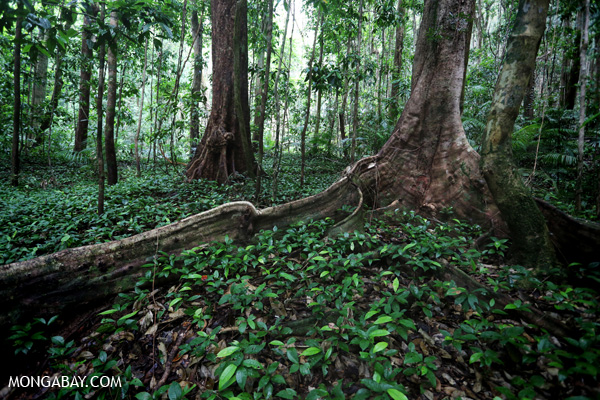
Rainforest in Australia
GENERAL QUESTIONS ABOUT MONGABAY
How many people read Mongabay?
In October 2014 Mongabay received its 200 millionth lifetime visitor.
Overall for 2014, Mongabay received just over 21 million visitors, according to Google Analytics. Mongabay-Indonesia received 1.3 million and WildMadagascar.org got 700,000+.
Who reads Mongabay?
Mongabay readership is very broad, ranging from school children to the President of Indonesia. Generally however, the news section has particularly strong readership among environmentalists, conservation scientists and ecologists, people in corporate social responsibility programs, and officials in government ministries that govern land use.
Readership is international. The top countries by visitors in 2014: United States (41.7%), United Kingdom (9.6%), Australia (4.7%), Canada (4.6%), India (3.3%), Malaysia (3.2%), Germany (2.3%), Indonesia (2.1%), Singapore (1.7%), France (1.6%), Netherlands (1.6%), and Brazil (1.4%).
52 percent of readers for the news site are female.
By age, the largest reader group in 2014 was 25-34 (34%), followed by 18-24 (20%), and 35-44 (15%).

Deforestation for palm oil production in Malaysia
Is mongabay.com credible?
We strive to provide accurate information. We rely heavily on peer-reviewed research as well as a network of scientists and journalists. We are quick to drop sources that we find to be inaccurate or misleading.
If you find something on the site that you know to be inaccurate, please contact us and we’ll look into it.
Is Mongabay still dependent on advertising revenue?
Until recently, Mongabay was entirely dependent on advertising revenue. The dependence greatly limited the ability of Mongabay to grow, especially with the collapse of interest in green advertising after the 2008-2009 financial crisis. So in 2012, I established a non-profit organization called Mongabayorg Corporation (Mongabay.org) to enable Mongabay to expand.
The decision was critical for ensuring a future for Mongabay. It also allowed us to develop new programs like Mongabay-Indonesia, an Indonesian-language environmental news service launched in 2012; Special Reporting Initiatives, grants to journalists for in-depth reporting in third party media; and the Mongabay Reporting Network, which provides opportunities for environmental journalists around the world. In October 2013, Mongabay’s news production moved under the non-profit, allowing us to seek donations and apply for grants to support our reporting.
Today Mongabay relies primarily on donations and philanthropic support. In 2014, advertising revenue accounted for less than 10 percent of income. In 2015 we’re hoping to launch some new initiatives that could further reduce the need to run ads on the site, while improving user experience.
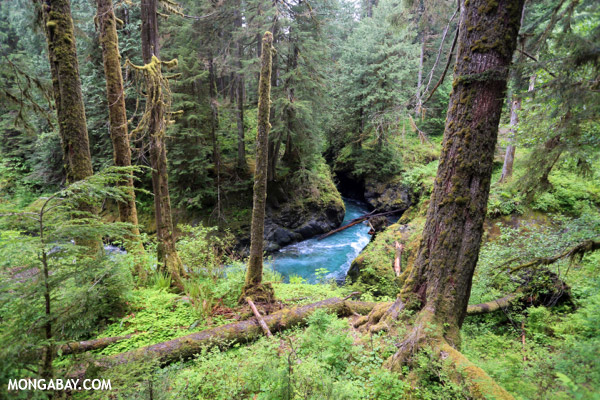
Quinault river in Washington State
Why does Mongabay accept advertising from Company X?
While we’d love to eliminate advertising completely from Mongabay, the economic realities are still such that we need to carry ads.
Instead of maintaining a staff position to manage advertising, we’ve effectively outsourced ads to Google. That means roughly 95 percent of ads you see on the site are served automatically by Google based on location or other factors. Therefore if you see an objectionable ad, chances are it is not a direct Mongabay advertiser — it is running via Google’s network.
We generally don’t interfere Google’s ads because we prefer to concentrate our limited resources on producing content rather than policing the tens of thousands of ads running on the site at any given moment. We also believe that our readers should be well enough informed about the products they buy and the politicians they support to make intelligent and responsible buying and voting decisions. We believe companies that devote ad dollars to Mongabay via Google are wasting their money if they are promoting things like monoculture plantations and oil companies, since Mongabay readers won’t support those things or buy those products.
However we do block especially egregious ads when they are brought to our attention.

Banyan trees in Hawaii.
Why doesn’t Mongabay take positions on issues?
There are many advocacy groups doing important work to save rainforests. However Mongabay is not an advocacy organization. We do not sign petitions, endorse campaigns, or align with any particular NGO.
We view our role as an informer, providing accurate and credible information about forests and other ecosystems. We believe this information helps raise awareness and provides value to a wide range of actors in the forest conservation space.
How does Mongabay decide what stories to cover?
Generally the stories that we cover are ones that have significant conservation implications, are likely to appeal to a broad audience, or happen to win the attention of one of our writers or editors. We monitor major science and conservation journals for stories, have a huge network of contacts, and are also on many press distribution lists.
You’re always welcome to send story ideas, but bear in mind that we’re only able to cover a small fraction of the stories that pop up on our radar, so don’t take it personally if we can’t cover your study or project.
Can I use Mongabay photos and content on my web site or in my presentation?
Images taken by Mongabay staff (e.g. have a “Mongabay” watermark on them) can be printed for personal use, shared via social media, used in presentations, and posted on web sites provided the mongabay.com logo is not removed. More details on our use policy are available here.
Scale-crested pygmy tyrant in Costa Rica
What’s the deal with your logo and mascot?
Our lizard logo is modified from a picture I took of an endemic day gecko in Southern Madagascar.
Our mascot is the scale-crested pygmy tyrant, a bird that lives in Central and northern South America.
Is Mongabay hiring?
Opportunities are listed at Mongabay.org as they arise. There you can also sign up for notifications about jobs, freelance work, and other projects.
NEW QUESTIONS
Why does Mongabay remain silent on old-growth forest logging?
Asked Jan 7, 2015 by Dr. Glen Barry
Mongabay does not “remain silent on old-growth forest logging”. We have covered old-growth forest logging extensively, producing scores of articles on related issues, including the role first-time forest logging has in driving deforestation, the ecological impacts of selective logging, the conservation value of primary forests, and controversies over certification schemes like that run by the Forest Stewardship Council (FSC). To view these articles, you can check out our various news feeds like the full logging feed and old-growth forests feed.
